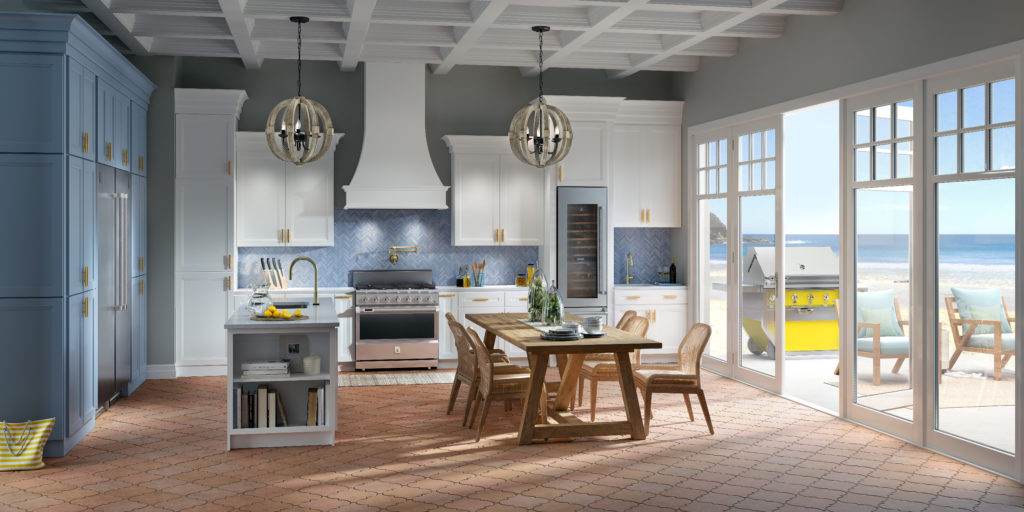How High-End Home Brands Are Benefiting from CGI

It used to be that creating fantasy kitchen photography as part of a marketing campaign for our client Viking Range required a highly complex, six-figure photo shoot, complete with skilled set designers, food stylists, and prop masters – not to mention an A-level photographer and producer. During the 25 years that we spent building the Viking brand, we completed dozens of these kitchens – and I’m proud that many of the photos still feel fairly timeless when I see them today. That’s a testament to the quality of the team.
In the year or two before Viking was acquired in 2013, we had started experimenting with computer-generated imagery (CGI), which of course, is the kind of special visual effects, created using computer software, that you see in movies. We were by no means the first to deploy this technology in the high-end home category, but we were definitely early adopters. We liked the fast speed and low cost of deploying CGI, even though the outcome in a final photograph did not quite look as realistic as we would’ve liked.
In 2014, we started working with our clients at Hestan to build the next iconic high-end culinary brand. Even then, CGI worked in some applications, especially single-product shots where we could supply CAD drawings and get a reasonable CGI shot of an oven range, for instance. But for the larger fantasy kitchens, the technology still couldn’t produce shots that were realistic enough to please our client or our internal team.
That was then. This is now. There must be some sort of Moore’s Law effect over the past two or three years that has provided quantum advances in CGI, because the outcomes have finally reached a tipping point, in my opinion. Just as movies have become more over-the-top in realistic CGI, I think we’ll see more and more of this technology in marketing communications.
Working with our talented partners, we’re now able to create beautiful Hestan kitchens in less time and for a fraction of the historical costs of a big, traditional photo shoot. We still build sets for video production and selected still photography shoots, of course, but it’s great to have the flexibility of utilizing CGI when it makes strategic sense.
For marketers of high-end home brands, CGI may provide you with the ability to create scenes that might otherwise be cost-prohibitive – or even impossible to shoot in a traditional manner. A furniture line might be shown in a castle, for instance; bathroom fixtures can be displayed in the world’s most exotic setting; and windows or window treatment brands can now be transformed into something magical inside a dream home.
If your high-end home brand can benefit from some new creative assets, I believe you now have another option at your disposal with CGI. So think about whether this improved technology is right for you. If you’d like to talk more about our experience with CGI, feel free to contact me.
The New World of Computer-Generated Imagery


